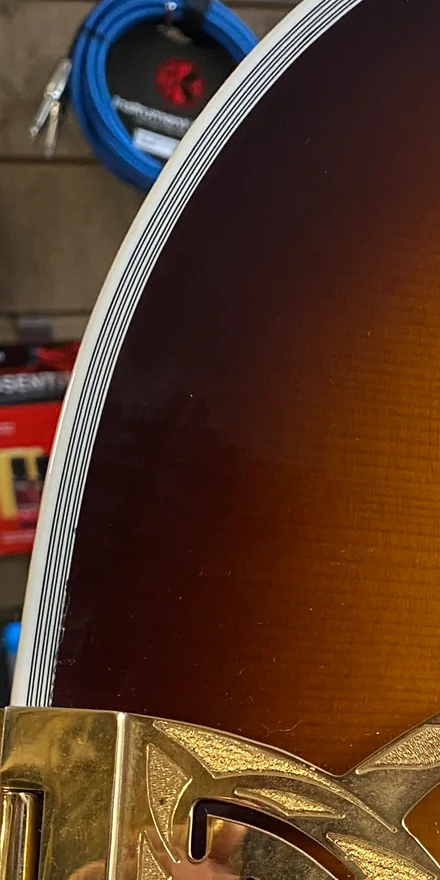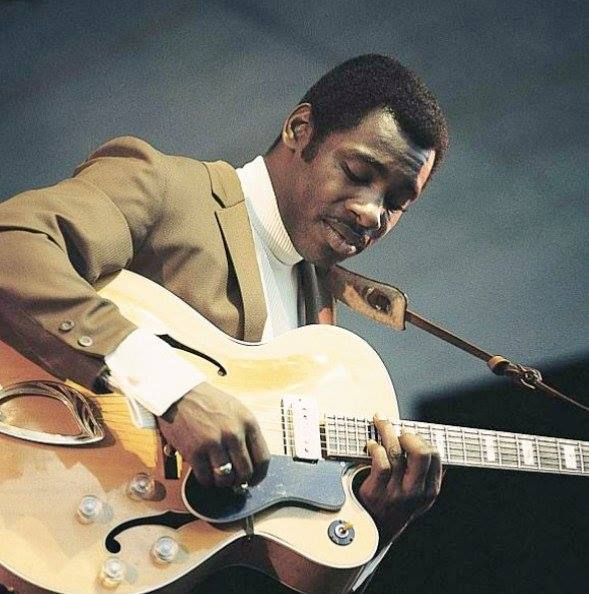Minnesota Flats
Senior Member
- Joined
- Oct 3, 2015
- Messages
- 1,367
- Reaction score
- 1,258
OK, you wide-body-binding-haters: here's some trivia for ya.
Originally, Les Paul body binding width remained consistent around the entire perimeter of the body. The problem with doing it that way is the carved maple cap, which peeks out under the binding in the cutaway, giving the design a somewhat "unfinished" or "poorly-thought-out look (see PIC on right). At some point (late 1960s? early 1970s?) Gibson sought to rectify this by widening the binding gradually in the cutaway in order to cover this "seam" between the maple cap and the mahogany body (see PIC on left):

I suspect that something similar is going on on that L-5S in the post above.
Evidently lots of people complained about this apparent correction of what was probably originally a design oversight because it made the binding in the cutaways of new LPs look "different" from the cutaways of the old ones. Pretty ironic, since the original "look" was probably a mistake and the revised design was cleaner from a craftsmanship perspective. If memory serves, there was such an uproar that Gibson actually went back to the "original" binding (cap seam showing) which was probably easier to manufacture anyway.
Funny how some rock musicians, normally characterized as being "wild" and "edgy" can get so stodgy about the width of the binding in a LP cutaway or how many plies of plastic their Strat pickguard is made from or the number of screws that are holding it on.
Originally, Les Paul body binding width remained consistent around the entire perimeter of the body. The problem with doing it that way is the carved maple cap, which peeks out under the binding in the cutaway, giving the design a somewhat "unfinished" or "poorly-thought-out look (see PIC on right). At some point (late 1960s? early 1970s?) Gibson sought to rectify this by widening the binding gradually in the cutaway in order to cover this "seam" between the maple cap and the mahogany body (see PIC on left):

I suspect that something similar is going on on that L-5S in the post above.
Evidently lots of people complained about this apparent correction of what was probably originally a design oversight because it made the binding in the cutaways of new LPs look "different" from the cutaways of the old ones. Pretty ironic, since the original "look" was probably a mistake and the revised design was cleaner from a craftsmanship perspective. If memory serves, there was such an uproar that Gibson actually went back to the "original" binding (cap seam showing) which was probably easier to manufacture anyway.
Funny how some rock musicians, normally characterized as being "wild" and "edgy" can get so stodgy about the width of the binding in a LP cutaway or how many plies of plastic their Strat pickguard is made from or the number of screws that are holding it on.




